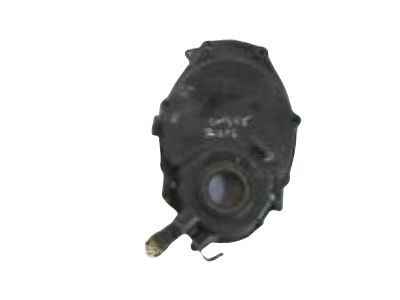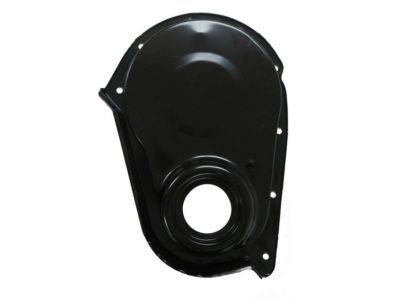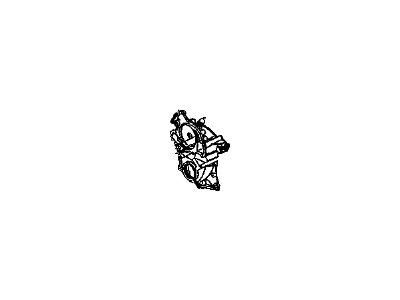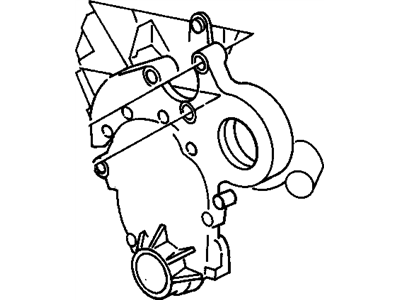My Garage
My Account
Cart
Genuine Buick Century Timing Cover
Engine Timing Cover- Select Vehicle by Model
- Select Vehicle by VIN
Select Vehicle by Model
orBuick
Century
Year
Select Vehicle by VIN
For the most accurate results, select vehicle by your VIN (Vehicle Identification Number).
14 Timing Covers found
Buick Century Cover Assembly, Engine Front
Part Number: 10101799$33.12 MSRP: $66.05You Save: $32.93 (50%)Ships in 1-2 Business Days
Buick Century Timing Cover
Usually, the Timing Cover of Buick Century vehicles is a metallic plate covering the timing belt or chain which guards the numerous sensitive parts of the engine's timing train from being hindered by debris. In many cases the covers of these young Memorandum timing devices are made from aluminum, plastic or steel and they incorporate gaskets to further increase the security of the mechanism. Thus, throughout the years, a number of types of timing covers has been used in various models of Century, and the single objective- to enhance and maintain the durability of the car's timing. All in all, it is advisable to perform the timely replacement of the worn or the damaged timing cover to avoid risky and unsafe driving experiences.
Each OEM Buick Century Timing Cover we offer is competitively priced and comes with the assurance of the manufacturer's warranty for the part. Furthermore, we guarantee the speedy delivery of your orders right to your doorstep. Our hassle-free return policy is also in place for your peace of mind.
Buick Century Timing Cover Parts Questions & Experts Answers
- Q: What are the removal and installation procedures for Timing Cover on Buick Century?A: To be able to remove or install Buick engines, just follow these, Drain cooling system and pull out the Radiator, fan, pulley and belt. Remove fuel pump and the alternator if necessary. Distributor should be removed but not before noting its position so that it won't disturb anything. To achieve this, you need to remove the thermostat by-pass hose, harmonic balancer, timing chain-to-crankcase bolts and also Oil Pan-to-Timing Cover bolts in order to take off the Timing Cover. After driving out the old seal and shedder, coil new packing around opening, drive in shedder, and properly size packing. To make sure of this Camshaft sprocket bolt shall be removed without changing its position while sprockets' timing marks coincide with each other and front Crankshaft oil slinger is detached from it for good. On a 350 engine there is a crankshaft distributor drive gear and fuel pump eccentric while on a V6 there are camshaft sprocket bolts that must be removed. The camshaft may then be carefully pried along with crankshaft sprockets forward thereby removing all of them together with their chains. Then you need to check that No. 1 Piston is at top dead center before assembling the timing chain on both sprockets and sliding them onto shafts with 0-marks aligned; thereupon put slinger into place on crankshaft; slide fuel pump eccentric on camshaft followed by putting woodruff key in place; put back distributor drive gear as well as eccentric bolt over there. Tighten bolts using specified torque values then install new seal gasket plus cover for timing case after which secure it using appropriate bolts. Before reinstalling oil pan plus other components clean all gasket mating surfaces as well as apply silicone sealer to oil pan-to-cylinder block joint. In Pontiac Engines (265 & 301), drain the cooling system, disconnect hoses, vacuum lines, and spark plug wires, and remove the radiator. To enable this happen is simply disconnecting the accelerator linkage and temperature gauge wire as well as fuel lines. Hood latch brace, PCV valve hose, rocker covers, distributor, Intake Manifold are to be completely removed together with valve cover. Just loosen rocker arm nuts and then remove pushrods plus lifters. After that take out the timing cover and gasket followed by fuel pump eccentric and bushing in order to get at harmonic balancer; fuel pump; oil pan-to-timing cover bolts; the harmonic balancer; oil pan-to-timing cover bolts; timing cover as well as gasket; timing chain along with sprockets replacing it later with new ones. First of all position the engine with No. 6 piston at top dead center even before rotating crankshaft to align camshaft gear mark at 12 o'clock after which slide these camshaft plus crankshaft sprockets onto their respective shafts having their 0-marks aligned. This should be done prior to putting slinger on crankshaft or installing fuel extractor eccentric or using camshaft sprocket bolts such as camshaft thrust plate. Lubricate parts during reassembly according to procedures employed earlier in disassembling them. In Chevrolet Engines (305 & 350), drain radiator and take off belts including fan, pulley, crankshaft pulley and balancer among others. Clean all gasket mounting surfaces first of all. In reinstalling process apply silicone sealer for oil pan-to-cylinder block joint; use a centering tool when handling front cover then tighten it down by securing its bolts; hang harmonic balancer on place like it was before then put back pulley too just like it is supposed to be followed by Water Pump that needs some new belts which must also be fixed on place along with other parts such as radiator and the like. For Oldsmobile Engines (307, 350 & 403), drain the coolant, disconnect hoses, remove fan, belts, pulley, crankshaft pulley and balancer on some models. Remove front cover bolts then take it off along with timing indicator and water pump. Later models have dowel pins that are ground while their ends are chamfered. Just trim gaskets before cleaning mating surfaces to apply sealer in addition to placing new seals as well as gaskets where they belong. After installing the cover again use another bolt to secure it; this is followed by tightening while holding down pan seal afterwhich press down on the cover and rotate it for a while; finally tighten bolts again. Lubricate balancer seal surface followed by reversing sequence of removal in which balancer is installed together with other parts.
Related Buick Century Parts
Browse by Year
2005 Timing Cover 2004 Timing Cover 2003 Timing Cover 2002 Timing Cover 2001 Timing Cover 2000 Timing Cover 1999 Timing Cover 1998 Timing Cover 1997 Timing Cover 1996 Timing Cover 1995 Timing Cover 1994 Timing Cover 1993 Timing Cover 1992 Timing Cover 1991 Timing Cover 1990 Timing Cover 1989 Timing Cover 1988 Timing Cover 1987 Timing Cover 1986 Timing Cover 1985 Timing Cover 1984 Timing Cover 1983 Timing Cover 1982 Timing Cover

















